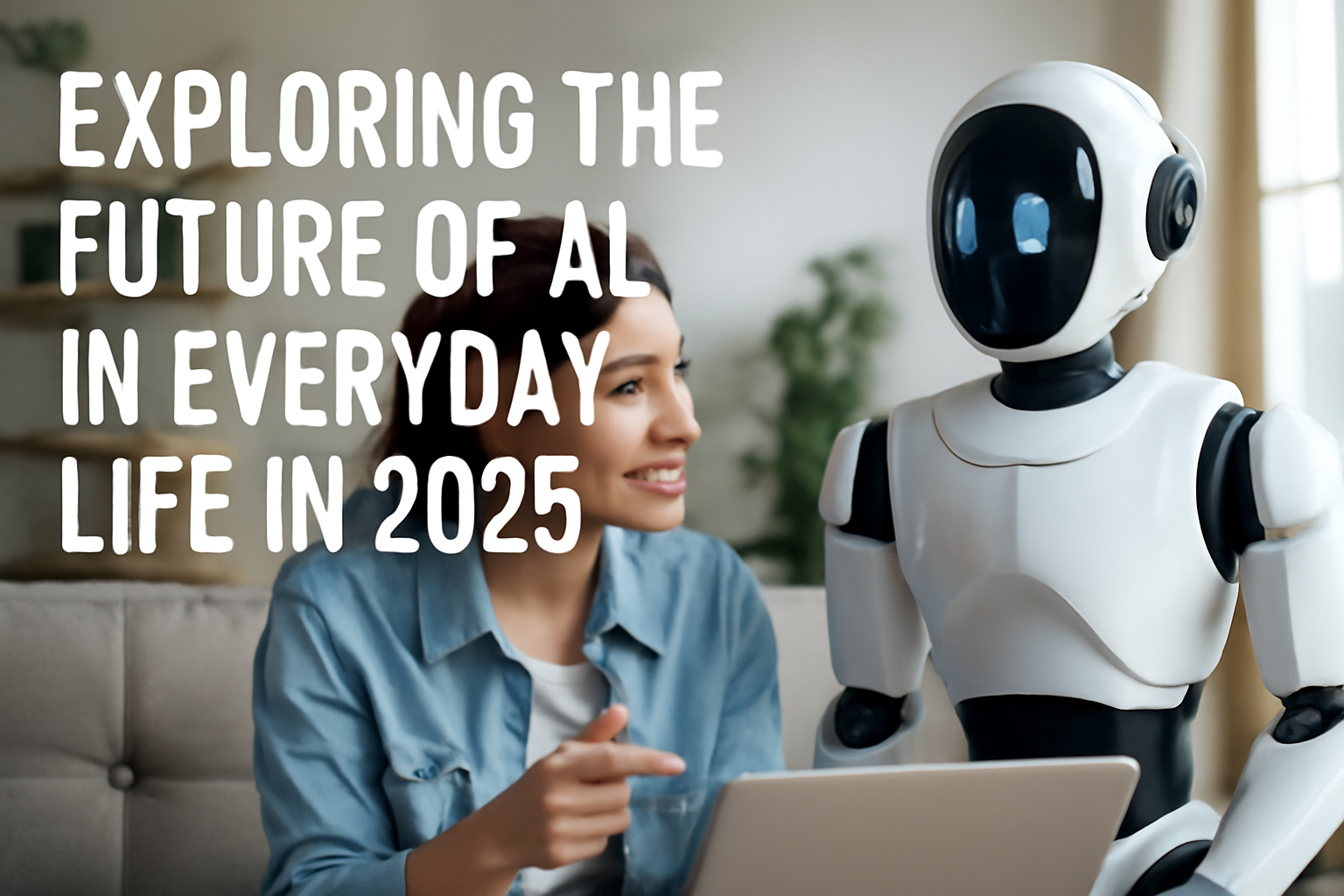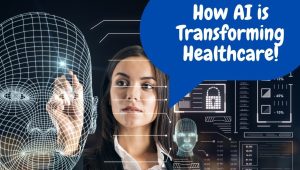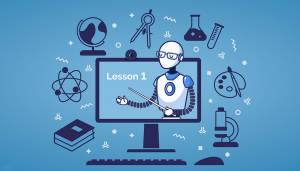Technology
Exploring the Future of AI in Everyday Life in 2025

Introduction
Artificial Intelligence, or AI, is no longer just a part of science fiction. It is found in homes, workplaces, schools, and even our phones. The smart tools we use are powered by AI to make life easier, faster, and better.
From voice assistants to personalized health tracking, AI is Changing how we live. These tools help people stay organized, save time, and make better choices. Whether it’s suggesting your next song or helping doctors find problems early, AI in everyday life is more useful than ever.
This article explores how AI is shaping our daily lives in 2025. We will look at what AI is, how it works, and where it appears in your routine without you even realizing it.
Let’s explore the exciting and growing role of AI in our everyday lives—and how it’s quietly making the world smarter around us.
Artificial intelligence (AI) has come a long way in recent years, and its impact on our daily lives is only going to grow in the future. By 2025, AI will be even more integrated into various aspects of our lives, transforming everything from the way we work and learn to how we manage our health and personal tasks. But what exactly does the future of AI hold for us? In this article, we’ll explore the exciting advancements in AI technology, how they’ll affect everyday life, and the ways in which we can expect to see AI shaping our future.
What Is AI and Why Is It Important Today?
Artificial Intelligence is a type of computer program that can learn, think, and make decisions like humans. It uses data, patterns, and logic to solve problems and suggest actions. Unlike regular software, AI keeps learning over time. The more data it has, the better it gets.
In 2025, AI is everywhere. It powers voice assistants like Alexa, Siri, and Google Assistant. It runs chatbots on websites. It suggests what you might want to watch on Netflix or buy on Amazon. It even helps manage traffic, detect diseases, and create smart robots.
The reason AI is so important now is because it saves time and improves accuracy. It handles boring or repetitive tasks. It keeps systems running smoothly. It learns your preferences and offers custom suggestions. From homes to hospitals, from banks to classrooms, AI applications are making everyday activities easier and smarter.
AI also helps people stay safe. In health, it can find signs of illness early. In cars, it powers smart braking systems. In cities, it manages energy and security systems. By handling complex data quickly, AI makes life more comfortable and helps us make smarter choices.
As the world becomes more connected, AI in daily life will keep growing. It’s already improving how we live, and in the coming years, it will become even more helpful, personal, and invisible.
What Is the Future of AI in 2025?

Image by: Yandex.com
By 2025, AI applications will blend seamlessly into daily tasks. Voice assistants will handle chores—ordering groceries or booking appointments. Smart displays will show your daily schedule and weather. AI will help manage energy in your house. Beyond simple commands, AI will learn your habits and suggest ways to save time and money.
AI chatbots will guide you through customer service calls or tech support. Simple questions will be answered instantly. AI will even help you pick movies or plan trips based on your past choices.
The future of AI in everyday life is about making tech feel natural. The goal is to reduce stress and free you to focus on what you love.
How AI Will Enhance Home Life
Your home will become smarter in 2025. Smart home AI devices will adjust lights, heat, and music to match your mood. Imagine coming home to soft music and warm lights after a long day.
Refrigerators will track what you eat. They’ll suggest recipes and add missing items to your shopping list. Robotic vacuum cleaners will map your rooms and clean on a schedule without you lifting a finger.
Security cameras with AI applications will spot visitors, pets, or even packages on your porch. They’ll send alerts only when needed, cutting down false alarms.
Voice assistants will also read bedtime stories to kids or set reminders for medicine. Home life will feel more like a team effort between you and your smart devices.
How AI Will Transform Healthcare

Image by: Yandex.com
In healthcare, AI in 2025 will help doctors and patients alike. Wearable devices will track vital signs like heart rate, oxygen levels, and sleep patterns. AI will analyze this data in real time and warn you or your doctor of potential issues.
Virtual health assistants will guide you through simple medical tests at home. They’ll remind you to take medication and schedule doctor visits. AI algorithms will scan X-rays and MRIs faster, helping doctors detect problems sooner.
In hospitals, robots will deliver supplies, freeing staff to focus on patient care. AI will optimize staff schedules and predict patient needs, making healthcare smoother and more personal.
With AI in healthcare, patients gain more control over their health, and doctors gain powerful tools to do their work better.
How AI Will Change Education

Image by: Yandex.com
Classrooms in 2025 will be more personal with AI technology in daily life. Smart tutors will adapt lessons to each student’s skill level. If a student struggles in math, the tutor will offer extra practice and clear explanations.
Teachers will use AI to grade tests and spot where the class needs more help. This cuts grading time, giving teachers more chances to engage with students.
Virtual reality powered by AI will take students on field trips to ancient Rome or inside a human cell. Learning will feel like an adventure.
For adults, AI will power lifelong learning. Apps will suggest short courses or articles based on your job or hobbies. Learning a new language or skill will fit into any schedule, making education truly flexible.
1. Personalized Learning
AI will help create personalized learning paths for students based on their strengths, weaknesses, and learning styles. For example, adaptive learning platforms will use AI to track a student’s progress and adjust the content and difficulty level in real-time. This ensures that each student gets the support they need to succeed.
2. AI Tutoring Systems
AI-powered tutoring systems will be available to help students with their homework, assignments, and studying. These systems will provide instant feedback, help students understand complex concepts, and offer personalized support. With the rise of online learning, AI will be an invaluable tool in supporting students across the globe.
3. Automating Administrative Tasks
AI will also help reduce the workload of teachers and administrators by automating tasks such as grading, scheduling, and student assessments. This will give educators more time to focus on teaching and supporting students directly.
How AI Will Improve Work and Productivity

Image by: Yandex.com
At work, AI applications will handle routine tasks. Chatbots will draft emails and schedule meetings. AI tools will summarize long documents and highlight key points.
Teams will use AI for real-time translation in video calls, breaking language barriers. AI will also analyze data faster, helping businesses spot trends and make smarter decisions.
For individual workers, AI-powered note-taking apps will record and transcribe meetings. AI co-workers will suggest project ideas or flag errors in code or reports.
This shift lets people focus on creative work and strategic thinking. With AI in everyday life, productivity goes up while stress goes down.
1. AI-Powered Project Management Tools
AI-powered project management tools will help teams collaborate better and stay on top of their tasks. These tools will use machine learning to analyze project data and predict potential risks or delays. They will also suggest the best course of action and help allocate resources more effectively.
2. Automating Repetitive Tasks
AI will automate many of the repetitive tasks that take up valuable time, such as data entry, scheduling meetings, and responding to basic customer inquiries. This will allow employees to focus on more creative and strategic work, ultimately boosting productivity and job satisfaction.
3. Enhancing Communication with AI Chatbots
AI-powered chatbots will continue to improve communication within companies by automating customer service and internal communication. These chatbots can quickly answer questions, provide information, and help employees stay connected and informed. They can even assist in decision-making by analyzing vast amounts of data in real-time.
How AI Will Impact Transportation and Mobility
In 2025, AI trends 2025 in transportation will reshape how we move. Self-driving cars will handle long highway stretches, letting you relax or catch up on work.
Public transit systems will use AI to predict crowding and adjust schedules. You’ll get alerts on your phone for the fastest routes, switching between buses, trains, and bikes.
Smart traffic lights will sense traffic jams and change signals to clear main roads first. Delivery robots and drones will drop off packages to your door without delays.
These advances mean fewer accidents, shorter commutes, and a cleaner environment. AI in transportation puts the future of mobility into our hands today.
Table: AI Applications Across Daily Life
| Area | AI Feature | Everyday Benefit |
|---|---|---|
| Home | Smart Displays, Automated HVAC | Comfort at home, energy savings |
| Healthcare | Wearables, Diagnostic AI | Early warning, easier monitoring |
| Education | Adaptive Tutors, VR Learning | Personalized lessons, engaging trips |
| Work | Automated Scheduling, Chatbots | More creative time, less busy work |
| Transportation | Self-Driving, Smart Signals | Safer, faster, greener travel |
Tips to Thrive with AI in Daily Life
To make the most of AI in everyday life in 2025, follow these tips. First, pick one AI tool at a time to avoid overload. Learn its features well before adding more.
Second, protect your data. Use strong passwords and two-factor authentication for AI apps. Read privacy settings and limit data sharing when possible.
Third, keep a balance. AI can entertain and inform, but unplug regularly. Spend time offline with family, nature, or hobbies.
Finally, stay curious. AI evolves fast. Follow tech news or online forums to learn about new AI gadgets and apps that can help you.
What AI Tools Will Power 2025?
In addition to broad applications, specific AI tools will become household names. From personal assistants to specialized apps, these tools bring AI into your pockets and onto your desktops:
| AI Tool Category | Example Tool | Key Use Case |
|---|---|---|
| Voice Assistant | Amazon Alexa | Smart home control, reminders |
| Virtual Health Coach | Vi Trainer | Guided workouts, real-time feedback |
| Writing Assistant | Grammarly AI | Grammar checks, style suggestions |
| Photo Editor | Adobe Sensei | Auto-tagging, smart filters |
| Financial Advisor | Cleo AI | Budget tracking, spending insights |
Each tool fits into your routines, from checking the weather by voice to refining your next report with AI-driven edits.
Conclusion
By 2025, AI in everyday life will be as common as smartphones. From smart home AI to Healthcare, education, work, and transport, AI will ease tasks and enrich experiences. These AI applications will give us more time for creativity, health, and connection. To thrive, start small: choose one AI device, learn its features, and protect your privacy. Stay open to new tools as they appear. With the right approach, AI will become a trusted partner, turning daily routines into smarter, happier moments
Technology
Enhancing Supply Chain Transparency with Blockchain Technology

Introduction
In today’s fast-paced world, supply chain transparency is more important than ever. Customers want to know where their products come from and how they are made. Businesses need to track every step, from raw materials to the final sale. Blockchain technology offers a powerful solution to these challenges. By using blockchain in supply chain operations, companies can record each transaction on a secure, unchangeable ledger. This article explains how blockchain boosts transparency, highlights real-world examples, and discusses the benefits and challenges of adopting this game-changing technology.
What Is Blockchain Technology?
Blockchain is like a digital notebook shared by many people at once. Each page in this notebook is called a “block.” When someone writes information in a block—such as a shipment of goods—it cannot be changed later. Blocks link to one another in a chain, making it easy to see every step of a process. Because many computers keep copies of the notebook, no one can delete or alter entries without everyone else noticing. This feature makes blockchain highly secure and ideal for tracking products in a supply chain.
Why Supply Chain Transparency Matters
Transparency in a supply chain means knowing exactly where products go and how they get there. This clarity helps:
- Build Trust: Customers feel safe buying from brands that share clear product histories.
- Improve Safety: Companies can quickly find and remove faulty or unsafe items.
- Reduce Waste: By tracking inventory in real time, businesses prevent overstock and spoilage.
- Ensure Compliance: Clear records help meet rules on labor, environmental practices, and safety standards.
- Strengthen Reputation: Transparent companies stand out as honest and reliable in crowded markets.
Without transparency, errors, fraud, and delays can occur. Blockchain helps solve these problems by recording every supply chain step.
How Blockchain Enhances Traceability
Traceability means following a product’s journey from start to finish. Blockchain makes traceability simple and reliable:
- Immutable Records: Every transfer—from a farm to a factory to a store—is logged permanently.
- Real-Time Updates: Participants add new data instantly, ensuring all parties see the latest status.
- Unique Identifiers: Each item can carry a digital ID linked to its blockchain record.
- Smart Contracts: Automated rules trigger actions—like payment release—when conditions are met.
By combining these features, blockchain allows businesses to spot delays and quality issues quickly and accurately.
Real-World Use Cases
1. Food Safety
Food recalls can be costly and dangerous. In one example, a major retailer used blockchain to track lettuce from farm to shelf. When contamination was detected, the retailer pinpointed the exact farm and batch in seconds rather than days. This rapid trace cut losses and protected consumers from illness.
2. Pharmaceutical Products
Counterfeit drugs pose serious health risks. A pharmaceutical company implemented a blockchain system that recorded every shipment of medicine. Pharmacies and hospitals scanned packages at each handoff. If a package failed verification, staff knew immediately and removed the suspect drugs from circulation.
3. Luxury Goods
Counterfeiting harms luxury brands and consumers. Some high-end watchmakers now engrave a unique QR code on each timepiece. Scanning this code reveals the watch’s entire history, from manufacturing to final sale. Buyers gain confidence knowing their purchase is genuine, and brands protect their reputation.
4. Electronics Manufacturing
Complex electronics require parts from many suppliers. A leading smartphone maker uses blockchain to track key components like chips and camera modules. When a faulty batch emerges, the company identifies the exact supplier and production date, speeding up repairs and recalls.
Key Benefits of Blockchain in Supply Chain
1. Improved Trust and Credibility
Immutable ledgers mean data cannot be altered. All parties—suppliers, manufacturers, distributors, and customers—trust the recorded information. This shared trust reduces disputes and fosters stronger business relationships.
2. Greater Efficiency
Blockchain cuts paperwork and manual record-keeping. Smart contracts automate payments when goods arrive or meet quality checks. These efficiencies save time and lower administrative costs.
3. Enhanced Security
Because each block links to the next, and copies exist on multiple computers, tampering is virtually impossible. Sensitive data—like pricing, shipment routes, and supplier details—remains safe from fraud.
4. Better Compliance and Reporting
Regulations often require detailed records of sourcing and handling. Blockchain provides clear, date-stamped evidence that helps companies comply with laws and pass audits effortlessly.
5. Consumer Engagement
Brands can share blockchain-based product histories with customers. Scanning a package’s QR code reveals every step, from raw material to shelf. This transparency builds loyalty and sets companies apart in competitive markets.
Challenges and Considerations
Despite its promise, blockchain implementation comes with hurdles:
- Integration with Legacy Systems: Many companies use older software. Connecting blockchain to existing systems requires time and expertise.
- Data Privacy: Public blockchains are transparent to all users. Sensitive business data may need to remain private, so companies often use private or permissioned blockchains.
- Scalability: High transaction volumes can slow down some blockchain networks. Choosing the right platform and optimizing transactions is crucial.
- Cost of Adoption: Initial costs include software, hardware, and staff training. Businesses must weigh these costs against the long-term benefits.
- Supply Chain Coordination: Blockchain only works if all participants join the network. Convincing suppliers and partners to adopt the technology can be challenging.
Careful planning and collaboration help overcome these barriers, ensuring a smooth transition to blockchain-enabled operations.
Best Practices for Blockchain Adoption
- Start Small: Pilot the technology in one product line or region before scaling up.
- Choose the Right Platform: Evaluate platforms for speed, cost, privacy features, and community support.
- Engage Stakeholders Early: Involve suppliers, logistics providers, and IT teams from the start to align goals.
- Standardize Data Entry: Ensure everyone follows the same rules for data formats and entry timing.
- Monitor and Optimize: Track performance metrics—like transaction speed and cost—and adjust your setup over time.
Following these steps helps companies realize the full value of blockchain in supply chain management.
The Future of Supply Chain Transparency
Emerging trends promise even greater gains:
- Integration with IoT: Smart sensors and RFID tags feed live data into the blockchain, updating temperature, location, or handling conditions instantly.
- Cross-Industry Collaboration: Multiple industries could share common blockchain networks, enabling end-to-end visibility from raw materials to retail.
- Green Supply Chains: Blockchain can record carbon emissions and resource use at each step, helping companies track and reduce their environmental impact.
- AI and Analytics: Combining blockchain data with AI tools can predict supply chain disruptions before they occur and suggest preventive actions.
As these technologies converge, supply chains will become more resilient, efficient, and transparent than ever.
Conclusion
Enhancing supply chain transparency with blockchain technology unlocks a new era of trust, efficiency, and security. By recording every transaction on an unchangeable ledger, companies can trace products from origin to final sale. Real-world use cases in food safety, pharmaceuticals, luxury goods, and electronics show the power of this approach. Despite challenges like integration and costs, careful planning and best practices pave the way for success. Looking ahead, IoT, AI, and green initiatives will drive even greater transparency. Embracing blockchain in supply chain management helps businesses protect consumers, reduce waste, and build stronger brands—today and for the future.
Technology
Best LED Bar Light for Car from Auxbeam India

Introduction
Are you searching for the best LED bar light for car? Auxbeam India offers top-quality LED bar lights that boost visibility and style. Whether you drive on dark country roads or need extra light for off-roading, an Auxbeam LED bar is a smart choice. In this guide, you will learn why Auxbeam India LED bar lights stand out, what features to look for, and how to install them easily. Let’s dive in and find the perfect car LED bar light India has to offer.
Why Choose Auxbeam India?
Auxbeam India has built a strong reputation for reliable lighting gear. Here’s why many drivers trust their products:
- High Quality: Each LED bar light uses durable materials and top-grade LEDs.
- Affordable Prices: You get premium performance without paying extra.
- Indian Support: Local customer service and warranty make maintenance simple.
- Wide Range: From slim 20-inch bars to massive 52-inch models.
By choosing Auxbeam India, you back a brand that focuses on safety, durability, and value.
Key Features of Auxbeam LED Bar Lights
When shopping for LED bars, look for these stand-out features:
- High Lumen Output: Auxbeam bars often deliver over 30,000 lumens. This bright light cuts through fog and darkness.
- Dual-Row Design: Many models feature two rows of LEDs, mixing spot and flood beams for both long-distance and wide-angle coverage.
- Aluminum Housing: Robust housing protects against water, dust, and impacts.
- Easy Mounting: Basic clamps and adjustable brackets make installation quick.
- Waterproof Rating: IP67 or IP68 ratings mean you can drive in rain or mud without worry.
These features help you pick the right bar for your needs.
Types of Auxbeam LED Bar Lights
Auxbeam India offers a variety of LED bar lights to suit different uses:
- Slim Single-Row Bars: Compact design, ideal for topping smaller cars.
- Dual-Row Bars: More LEDs and higher brightness for SUVs and trucks.
- Curved Bars: Wrap around bumpers for a modern look and extra peripheral light.
- Combo Beam Bars: Mix spot and flood patterns in one unit for balanced illumination.
Choose the style that fits your vehicle and lighting needs.
Benefits of Using LED Bar Lights
Installing the best LED bar light for car brings many advantages:
- Improved Safety: See obstacles on dark roads sooner, reducing accident risk.
- Off-Road Ready: Tackle trails, dunes, and forests with confidence.
- Energy Efficient: LEDs use less power than halogen or HID alternatives.
- Long Lifespan: Expect 30,000+ hours of bright light before replacement.
- Stylish Appearance: Upgrade your car’s look with a sleek light bar.
These benefits make LED bars a top accessory for both daily drivers and off-road enthusiasts.
Installation Tips
You don’t need to be a pro to fit an Auxbeam LED bar:
- Read the Manual: Each kit includes clear instructions and wiring diagrams.
- Secure Mounting: Tighten bolts but avoid over-torquing, which can crack brackets.
- Wire with Fuse: Always add an inline fuse to protect your car’s electrical system.
- Aim Properly: Level the bar so the beam pattern lights the road, not the sky.
- Test Before Final Fix: Power on to confirm wiring and beam pattern before tightening all screws.
With these tips, you’ll have a safe and sturdy installation.
Maintenance and Care
Keeping your LED bar in top condition ensures peak performance:
- Regular Cleaning: Wipe the lens with a soft cloth to remove dirt and bugs.
- Check Seals: Inspect rubber seals for cracks that could let water in.
- Tighten Mounts: Vibrations can loosen bolts over time; check them monthly.
- Inspect Wiring: Look for frayed wires or loose connections.
Routine care makes your LED bar last for years.
Comparing Top Auxbeam Models
Here’s a quick look at three popular choices from Auxbeam India:
| Model Name | Size (inches) | Beam Type | Lumens | Price (INR) |
|---|---|---|---|---|
| Apex 20” Single-Row | 20 | Spot | 16,000 | ₹5,499 |
| Nova 32” Dual-Row | 32 | Flood + Spot | 30,000 | ₹8,999 |
| Curve 52” Combo Bar | 52 | Flood + Spot | 45,000 | ₹12,499 |
Prices may vary. Always check the Auxbeam India site for current rates.
How to Pick the Right Bar for Your Car
Consider these factors before you buy:
- Vehicle Type: A compact car may suit a 20” bar, while SUVs handle 32”–52” bars.
- Usage: Off-road trips call for combo beams. City use might only need a flood pattern.
- Budget: Higher lumens cost more but offer better visibility.
- Mounting Space: Check bumper or roof rack room before ordering.
Align your choice with driving habits and budget for the best fit.
Where to Buy Auxbeam LED Bars in India
You can purchase Auxbeam India products from:
- Official Website: Direct access to full catalog and genuine warranty.
- Authorized Dealers: Many auto accessory shops stock popular models.
- Online Marketplaces: Platforms like Amazon.in sometimes offer deals—verify seller ratings.
Always buy from trusted sources to avoid counterfeit products.
Customer Reviews and Feedback
Real user feedback highlights why Auxbeam India is trusted:
- “Bright and clear!” Many drive longer hours without eye strain.
- “Easy fit.” DIYers praise the straightforward installation process.
- “Sturdy build.” Off-roaders note the bars survive bumps and splashes.
Checking reviews helps confirm you’re getting a quality product.
Conclusion
Selecting the best LED bar light for car from Auxbeam India is a simple way to boost both safety and style. With options ranging from slim single-row bars to powerful 52-inch combo lights, there is a model for every driver. Focus on key features like lumen output, beam pattern, and build quality. Follow easy installation and maintenance tips to keep your light bar shining bright. Whether you hit dark highways or challenging trails, an Auxbeam LED bar will guide your way. Choose smart, drive safe, and enjoy the road ahead with Auxbeam India’s top LED bar lights.
Game
Hire a Roblox Game Development Company in 2025 (India, USA)

Introduction
A Roblox game development company helps you build immersive user-generated content (UGC), simulators, roleplay, and metaverse-ready games on the Roblox platform. In 2025, leading studios use Roblox Studio, Lua scripting, and cloud scaling to create monetizable, multiplayer games. Vasundhara Infotech delivers end-to-end Roblox game development with UI/UX, scripting, and live game optimization.
In 2025, Roblox remains one of the fastest-growing gaming platforms, with millions of players worldwide. For businesses, educators, and content creators, building a Roblox game can open new revenue streams and engage a global audience. But developing a polished, fun, and secure Roblox experience requires specialized skills. That’s where hiring a top Roblox game development company—whether in India or the USA—makes all the difference. In this guide, we’ll walk you through why you should choose a professional team, compare Indian and U.S. firms, discuss costs and processes, and share tips for selecting the right partner.
What is a Roblox Game Development Company?
A Roblox game development company specializes in designing, coding, and launching games on the Roblox platform, a global game creation and UGC ecosystem with 70+ million daily users.
Unlike traditional game engines, Roblox Studio uses Lua scripting, built-in monetization, and cloud-hosted deployment, making it ideal for:
- Multiplayer social hubs
- Obby and tycoon simulators
- Educational metaverse worlds
- Gamified brand experiences
If you’re exploring cross-platform options beyond Roblox, see our game development company services.
Why Roblox is Exploding in 2025
Roblox is not just a platform it’s an economy. In 2025:
- Roblox has 4M+ active developers
- $700M+ in developer payouts annually
- Supports VR headsets, mobile, console, and desktop
- Favored by Gen Z, brands, and educators
It’s used to create:
- Virtual campuses
- Music concert experiences
- Digital storefronts
- Multiplayer shooter arenas
With its scalability and built-in monetization (Robux), it’s a goldmine for creators and brands alike.
Vasundhara’s custom software development services help scale even the most complex Roblox ecosystems with backend integration.

Why Hire a Professional Roblox Game Development Company?
1. Specialized Expertise
Roblox uses its proprietary engine and Lua scripting language. Experienced developers know how to optimize performance, implement multiplayer features, and navigate Roblox’s security and monetization systems.
2. Faster Time to Market
A dedicated team can take your idea from concept to launch more quickly than an in-house team learning the platform on the go. This speed lets you capture audience attention when trends shift fast.
3. Quality Assurance and Testing
Top development companies run extensive testing—stress tests, playtests, and bug hunts—to ensure your game delivers a smooth, fun experience on different devices, including PC, mobile, and Xbox.
4. Ongoing Support and Updates
A professional studio provides regular updates to fix bugs, add content, and adjust monetization, keeping your game fresh and players engaged over time.
Top Types of Games Built on Roblox
Some of the most popular Roblox genres include:
- Obby (Obstacle Courses)
- Tycoon & Simulator Games
- Roleplay Games (RPGs)
- Clicker & Incremental Games
- Tower Defense & Shooter Games
Businesses are also building Roblox training simulators and educational metaverse campuses for internal training and public learning.
Key Features of Roblox Game Development
FeatureBenefitLua ScriptingEasy, scalable game logicCloud HostingGames run without local serversMultiplayer DefaultsBuilt-in servers for real-time gamingRobux MonetizationEarn via Game Passes, Dev ProductsAvatar CustomizationDeep user personalization
These features let developers launch social-first, monetized games faster than traditional engines.
Internal Link in Paragraph: Learn how our mobile app development services complement Roblox for hybrid gaming strategies.
1. Define Your Vision
- List core gameplay features: avatar customization, leaderboards, in-game purchases.
- Set target platforms (PC, mobile, console) and audience age group.
2. Research Potential Partners
- Check portfolios for similar projects.
- Read client reviews on Clutch, Upwork, or Google.
- Request demos or private game showcases.
3. Evaluate Technical Skills
- Ask about Lua scripting expertise and familiarity with Roblox Studio.
- Inquire about experience with Roblox APIs, DataStores, and HTTP service.
- Confirm knowledge of Roblox’s community standards and moderation tools.
4. Review Creative Capabilities
- Inspect art style samples: 3D models, textures, animations.
- Discuss UI/UX design approach, ensuring an intuitive player experience.
- Verify sound design and music licensing processes.
5. Discuss Pricing Models
- Fixed-Price Projects: Good for well-defined scopes; low risk but less flexible.
- Time & Materials: Pay for hours worked; ideal when scope may change.
- Revenue Share: Studio earns a cut of in-game sales; aligns incentives but requires legal agreements.
6. Check Communication and Workflow
- Confirm tools: Slack, Teams, Jira, Trello.
- Set up regular check-ins—weekly or biweekly sprint reviews.
- Clarify reporting formats for progress, bugs, and asset delivery.
7. Assess Post-Launch Support
- Ask about maintenance packages for bug fixes and content updates.
- Inquire how quickly they respond to critical issues and server outages.
- Ensure they offer analytics integration to track player behavior and revenue.
How Vasundhara Builds Roblox Games
Our Roblox development lifecycle:
- Concept Ideation & GDD (Game Design Document)
- Lua Scripting & Map Design in Roblox Studio
- UI/UX Development
- Custom Animations, Sounds, and Effects
- Integration of Robux Economy & Game Passes
- Multiplayer Testing on Live Servers
- Publishing + LiveOps Scaling
We also handle Roblox moderation, datastore management, and analytics setup to help you run a successful game.
Need a dev team to take care of it all? Book your Roblox kickoff
Choosing the Right Roblox Development Partner
Before hiring, look for:
- Experience with simulators, roleplay, and multiplayer genres
- Ability to scale your game for millions of sessions
- Strong UI/UX capabilities to match Roblox aesthetic
- Transparent timelines, deliverables, and post-launch support
Vasundhara has shipped 50+ Roblox projects in 7+ countries, supporting creators, agencies, and enterprise brands.
Cost Breakdown and Budgeting
| Service | India (USD) | USA (USD) |
|---|---|---|
| Basic Game Prototype (5–10 hrs/week) | $2,000–$4,000/mo | $6,000–$12,000/mo |
| Full Game Development (3–6 months) | $15,000–$40,000 | $50,000–$120,000 |
| Art & Animation Package | $5,000–$12,000 | $15,000–$30,000 |
| Ongoing Maintenance (SLAs) | $1,000–$3,000/mo | $3,000–$8,000/mo |
| Marketing & Launch Support | $3,000–$7,000 | $8,000–$20,000 |
Conclusion
In 2025, hiring a Roblox game development company gives you the power to build viral, scalable, and monetizable gaming experiences. Vasundhara Infotech brings scripting, design, monetization, and multiplayer expertise to help your Roblox project thrive.
Ready to build your dream Roblox game? Book your free strategy call
FAQs About Roblox Game Development
Q.1 How much does it cost to make a Roblox game?
Basic games can start at $3,000. Multiplayer or economy-based games often range from $10,000–$40,000+ depending on assets and complexity.
Q.2 How long does it take to launch a Roblox game?
Simple maps can launch in 2–3 weeks. Fully interactive simulators take 2–4 months.
Q.3 Do I need a premium developer account?
No, but it helps with monetization and publishing. We can manage everything on your behalf.
Q.4 Can I scale my Roblox game to 10,000+ players?
Yes. With proper datastore handling, server allocation, and asset optimization, it’s scalable globally.
-
Business2 years ago
Cybersecurity Consulting Company SequelNet Provides Critical IT Support Services to Medical Billing Firm, Medical Optimum
-
Business2 years ago
Team Communication Software Transforms Operations at Finance Innovate
-
Business2 years ago
Project Management Tool Transforms Long Island Business
-
Business2 years ago
How Alleviate Poverty Utilized IPPBX’s All-in-One Solution to Transform Lives in New York City
-
health2 years ago
Breast Cancer: The Imperative Role of Mammograms in Screening and Early Detection
-
Sports2 years ago
Unstoppable Collaboration: D.C.’s Citi Open and Silicon Valley Classic Unite to Propel Women’s Tennis to New Heights
-
Art /Entertainment2 years ago
Embracing Renewal: Sizdabedar Celebrations Unite Iranians in New York’s Eisenhower Park
-
Finance2 years ago
The Benefits of Starting a Side Hustle for Financial Freedom
































